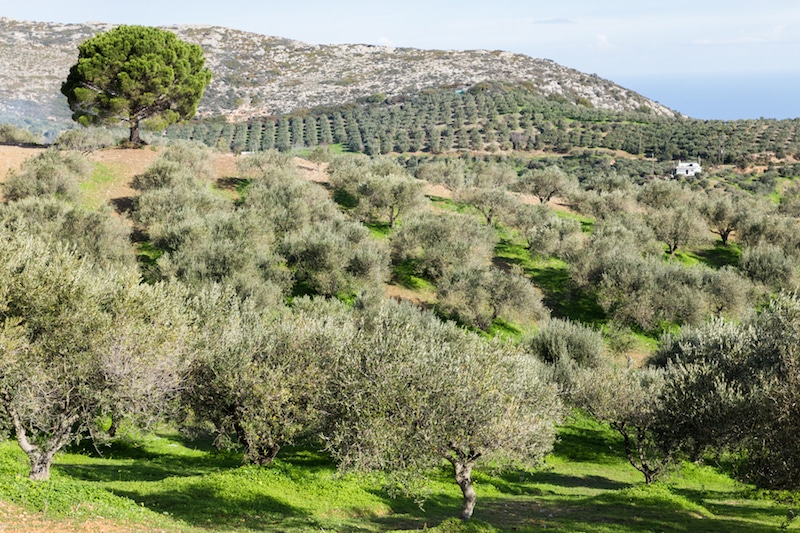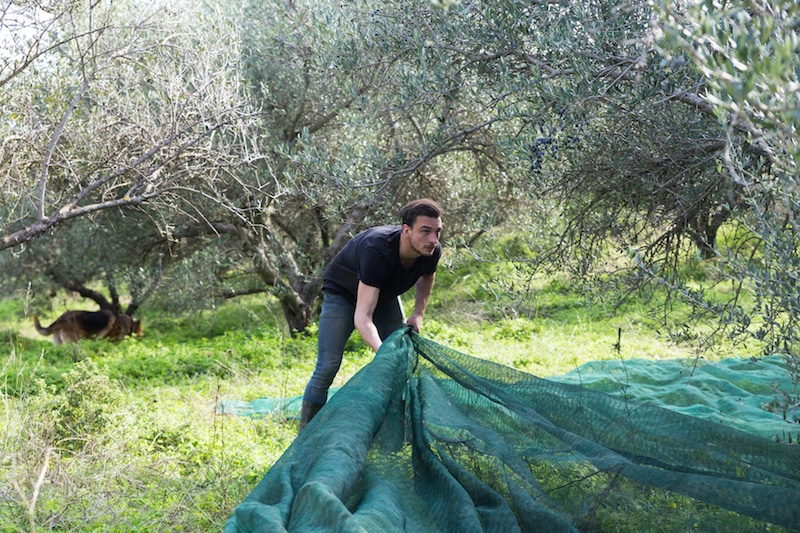Farmers usually try to fill up a field or orchard as symmetrical and fitting as possible, up to a point where it becomes almost neurotic. In Greece, however, they seem to have a different idea. Authentic olive orchards on Crete seem to have randomly placed olive trees that, ideally, are spaced five to six meters from each other. How come?
The distance between olive trees
Traditional olive oil production is usually done in dry mountainous areas. The traditional production style can be recognised by the distance between the olive trees; five to six meters. This distance between the trees is needed because an olive tree needs a lot of space when there is no irrigation or artificial fertilizer being used. Goats and sheep fertilize our lands and natural rainfall irrigates our orchards.

We use this traditional method intentionally in order to keep the process as authentic as possible. For the same reason, we also do harvesting in the traditional way. The olives are gently beaten out of the trees and caught in nets. The use of machinery is almost impossible for harvesting because the trunks are often too thick and branches go in all directions.
Harvests
With traditional production, the harvests vary between two and five tons of olives per hectare (one hectare equals two football pitches). From that two to five tons, about 25% is left in olive oil. However, it can take up to 15 years to get to peak production. Furthermore, traditional olive orchards are usually quite small. The average olive orchard on Crete is 1,5 hectares.

Thankfully, we are able to work together with other farmers on Crete in order to keep the traditional methods alive. We try to stick to our authentic roots while being innovative at the same time.














